Erick & Viola Carlson

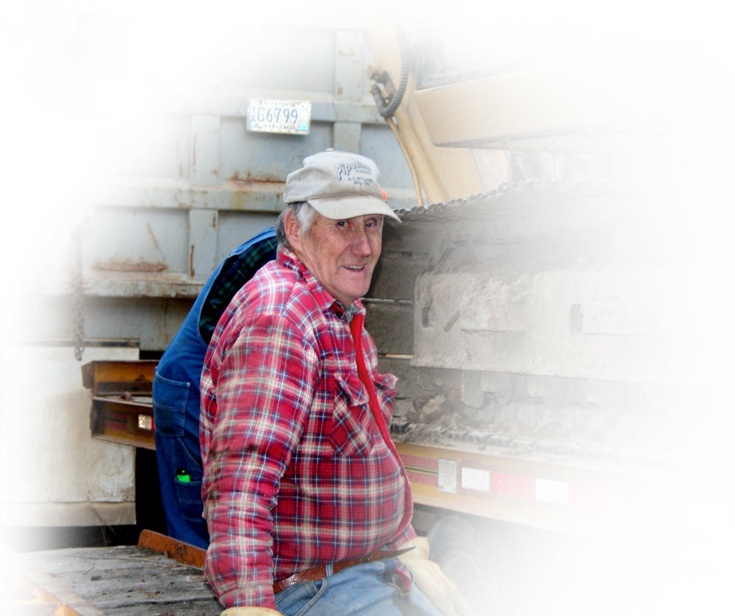


By Bernie Troje
At one time or other, many, if not most of us – probably most – have called on Erick Carlson for some kind of help: clearing a building site; having him dump his barnyard scrapings on our woodland gardens (which have fewer than six inches of top soil); building an inroad, or hauling gravel for one already established; putting in a septic system; and probably dozens of odd jobs individualized for each resident. All this while he farmed, logged, and graded for the township.
“Call Erick” has been a phrase repeated more than most. Fortunately for us, though he’s moved three times, it’s never been far: from the farm on 127 to the home on Little Sand Lake to their current home on County 4.
Meanwhile, Viola, his wife of almost 60 years, raised three children, two girls who now live in the cities, and a son Curtis, who with his wife Laurel, lives on adjoining land where, for several years, they had a greenhouse business. Curtis has continued with Erick to haul gravel and put in septic systems.
Obviously, the Carlsons are full time residents who have contributed their many talents over the years to a community to which they have been very loyal. Viola has served on the township board and as treasurer for the Evergreen Friendship Club and is currently treasurer and historian for W.O.W. (Women of the Woods). One of Erick’s more recent roles was finding entertainment for the monthly Friendship Club get-togethers, sometimes providing it himself playing his accordion.
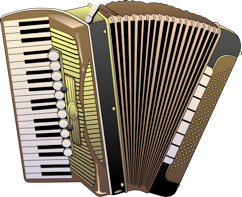
If you drive County 4 you’ve passed Erick in his gravel truck or Viola on her daily bike ride. While they lived on Little Sand they often celebrated the summer holidays with a Pick ‘n Post in their pole barn. If you attended you were supposed to bring a dish-to-pass and your talent. Residents took turns on the “stage,” singing, clogging, playing in their own band or solo, telling jokes, each act introduced by Erick who kept his accordion strapped on for the duration of the show. Viola always provided the setting: bales of hay arranged as seating, a buckboard wagon with manequins in western-pioneer garb, and seasonal touches such as cornstalks, tree branches and pumpkins.
Howard and Edith Hallet would drive over in a restored Model T, Warren Felts would come with his tuba, and Jim Justesen with his drums.
More than once, on other occasions, the Carlson family and friends were out on the lake on a pontoon with Erick playing his accordion for the group.
It’s easy to picture Erick with his accordion at church. But it’s been up close and personal where he’s made his best impression. He’s always had time for a conversation which usually includes a Sand Lake Township story from the recent or distant past. His folks settled the area. He was born here. So he’s a walking history book of our community.
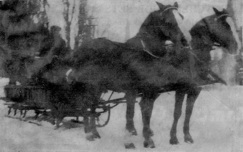
It is Pete Oslund, after whom the “town” at Anchor Inn is named. Before 1923 everyone had to go to Spring Lake for their mail. Erick’s uncle, Patrick Johnson, started the first mail route from Spring Lake to Oslund with his sleigh in the winter and his motorcycle until July 1st each summer.
Seth Pearson (Erick’s uncle) came over from Sweden in 1902 when he was eighteen. He heard about the homesteading, and he came to this area in 1905. You had to clear at least five acres in five years to secure your homestead and sleep on that property your first night. Erick’s folks came in 1923. Erick said, “There were a lot of bachelors up in the woods here who came for the land at $1.25 per acre. They cut wood, peeled it and sold it for $6.00 a cord of spruce delivered to the mill, but the hauler took half of that. They could cut a cord a day.
When Erick was growing up they had ten by sixteen foot tarpaper shacks to stay in while cutting wood. These had beds and barrel stoves. They would stay at these shacks four to five days at a time before going home for the weekend.
They used horses with which to skid the logs. Erick once froze his ears and nose driving the horses. Every year after that, his nose would start peeling at that time.
Erick and his brother Art’s wages went to support the family, to supplement the family’s income. Their parents, John and Agda Carlson, stayed on the farm to take care of the cows and cut firewood. In 1945 Art and Erick used their logging wages to buy a brand new Oliver tractor for $975.00. Later they bought implements. The plow, Erick remembers, was $75.00. Up until then they had used a team of horses to plow the fields. At the time their farm was 25 to 30 acres. Their crops were oats, alfalfa and tame hay which was feed for the animals. Later they added six to seven acres of silage corn. At the time they had beef cattle.
In this area people depended on each other. That made them a close community. They’d help each other thrash oats and put up the farm buildings. They’d go together to buy a piece of farm machinery. Once it was a manure spreader. Seven people owned it and took turns using it. His uncle Patrick would want to use it last so he could use it as long as he wanted. The farmers were DFL’ers and called their manure spreader the “Republican Platform.”
Erick was involved in 4-H from age nine through 18 years of age. One year he won a trip to the State Fair as an usher at the grandstand for ten days.
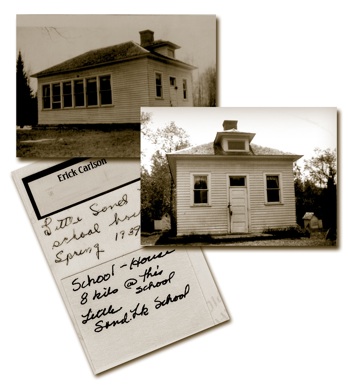

The Sand Lake school house was their community center. The students always put on holiday programs and served ice cream. Erick remembers the B. P. Johnson family would play their instruments and sing. Before the church was built, they had their Sunday services there as well.
After the Northwoods Chapel was built, there were missionary students who came and stayed in the basement. The Johnson’s, who had a car, would pick up the children for Vacation Bible School. Erick feels close ties to the church for these reasons.
At the time, where the Ames family lived was a separate “neighborhood.” Erick said the Bohemians settled east of here, and the Finnlanders had Squaw Lake.
As people acquired cars, these groups got together for house parties and began to intermarry. Viola and Erick met roller skating at the V.F.W. Hall near Talmoon off Highway 6. They’ve been married for 59 years as of August 11, 2012.

Viola remembers pinching pennies and baking bread.
Erick adds, “After the kids were a little older, she (Vi) went to work part time [but] she was always home when the kids came home [from school].”
Of their three children, Cindy Silbernagel, Sherry Weis & Curt Carlson, Viola says, “Every one of them worked for Fred [Eggar at Chapel Hill].”
Erick adds, “With extra money they earned they could buy an extra pair of shoes. A lot of their clothes were home sewn.”
Viola and Erick have fond memories of their neighbors from those days.
Erick said, “That’s one thing. I really miss all the old timers I grew up with.”
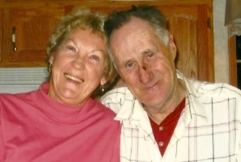
Vi misses Hazel Rosenbush [Howard Hallet’s sister]. Erick said, “She was a sweetheart.”
They remember the Underhills who bought Chapel Hill from the Eggars as “fun people.” Vi said, “She’d [Vi Underhill] have a nice dish of rolls in the cabin [for people who rented for a week].”
Erick talked at length about Howard Hallet’s parents, Walt and Annie. Walt “liked to live off the land, whatever he could find in the woods…. I just thought of him today, how interesting he was to talk to. They lived on venison, and they had a very big garden, and they lived on fish…. I think they had a cow, and they’d milk it. [To patch a tire for his old Chevrolet, Walt would] take a stove bolt and patch it with part of an old tire…. To see if he could get another mile or two out of it.”
About Fred and Bea Eggar, Vi recalled, “They were so nice. Our kids loved them. They loved the kids. They played Old Maid. Fred, he’d get the Old Maid card and he’d hide it.”
Erick added, “Fred was a good teacher. He always tried to teach ya, didn’t he?”
Of Warren Felts, who was a good friend of theirs, Erick said, “He was a prince.” Erick reminded that both Warren and Bill Heide from Spring Lake performed in “Showboat” when it came to Grand Rapids. Bill also sang on radio station KOZY.
The one thing Erick really misses is the old and faithful neighbors, such as the Stone family, Stangland family, Ostlund family, Wadman family, Okerman family and his uncle Patrick Johnson.
In 1979 Erick and Viola sold their farm and built a home on Little Sand Lake. Erick continued hauling dirt and gravel and did small construction jobs and put in septic systems.
More recently Erick and Vi spent five winters in Mesa, Arizona to escape the cold winters in northern Minnesota.
Of course, as a couple who were second generation settlers, the Carlson’s are very much aware of how things changed in the past fifty years up here. His father’s yearly income around 1940 was $1,000.00, and that was a lot. After the war incomes began to climb. The weather has also changed drastically. In 1966, so much snow fell the roads were just barely kept open.
Erick and Vi have flown to Sweden three times to share a family reunion and to renew their acquaintance with uncles, aunts and cousins. It used to take three weeks to get a letter to their relatives in Sweden. Now, with the internet, it’s a “blink of an eye.” And even though you used to wear out a Model T in 25,000 miles, the Carlson’s wonder if we’re better off.
Now, they feel we don’t have time to enjoy what we have. Erick points out, “We wanted more stuff and went out and worked. That probably wasn’t the best thing for raising a family and keeping the family together. [Families no longer] sit down at a table together. That kind of holds families together. That’s the trouble with the families and the kids today, you know. They aren’t glued together like years ago.”
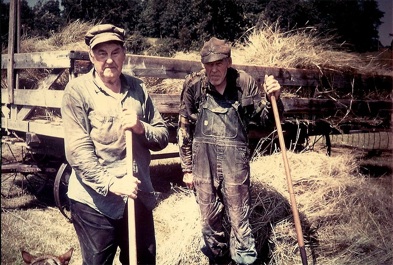
Residents took turns on the “stage,” singing, clogging, playing in their own band or solo, telling jokes, each act introduced by Erick who kept his accordion strapped on for the duration of the show.
Erick was delivered (to his home) by parcel post.

The Sand Lake school house was their community center. The students always put on holiday programs and served ice cream.
Erick’s uncles by marriage Patrick Johnson and
John Johnson
